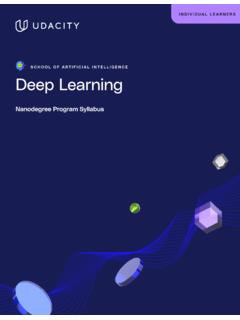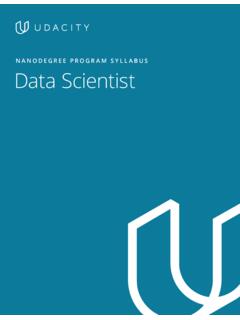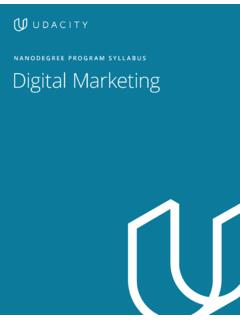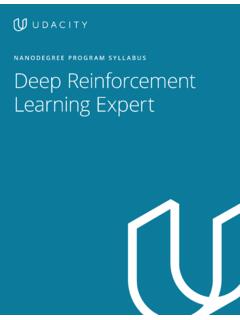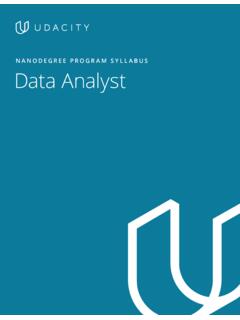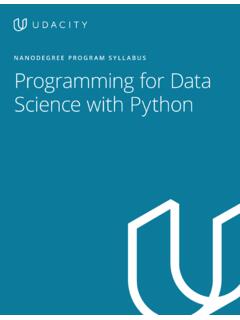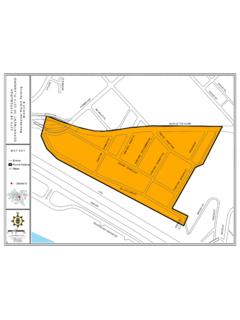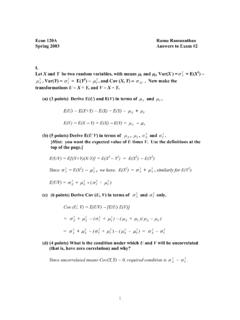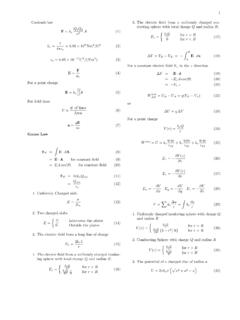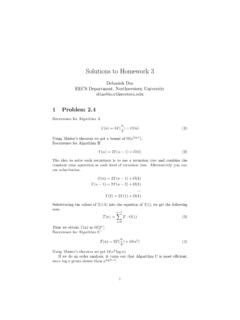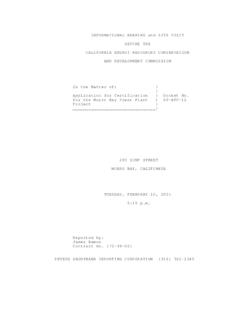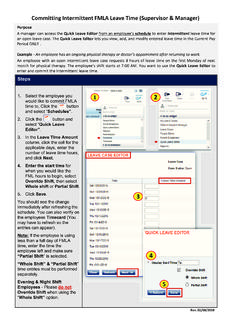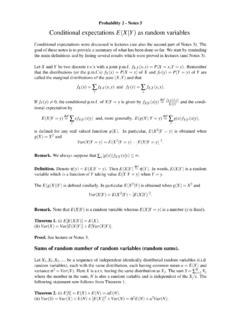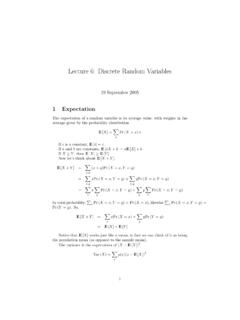Transcription of Pr ed i c ti v e A n a l y ti c s f or B u si n ess N a n ...
1 Predictive Analytics for Business Nanodegree Program Syllabus Learn to analyze data, create dashboards, and build predictive models Before You Start Prerequisites: In order to succeed in this program, you should be comfortable working with data in spreadsheets. You don t need any programming experience, but should have basic statistics and math knowledge. Educational Objectives: This Nanodegree program prepares you for a career in predictive analytics, and enables you to master a scientific approach to solving problems with data. You ll build fluency in two leading software packages: Alteryx, a tool that enables you to prepare, blend, and analyze data quickly; and Tableau, a powerful data visualization tool.
2 Over the course of the program, you ll learn to: Create mental models to clearly define business issues Visualize and prepare data to improve efficacy of predictive models Identify and implement a variety of predictive modeling techniques Length of Program*: 130 Hours Frequency of Classes: Self-paced Textbooks required: None Instructional Tools Available: Video lectures, mentorship, detailed project reviews *This is a self-paced program and the length is an estimation of total hours the average student may take to complete all required coursework, including lecture and project time. Actual hours may vary. Project: Predicting Diamond Prices (5 hrs) A jewelry company wants to put in a bid to purchase a large set of diamonds, but is unsure how much it should bid.
3 In this project, you will use the results from a predictive model to make a recommendation on how much the jewelry company should bid for the diamonds. You ll submit this project in your first 7 days, and by the end you ll be able to: Understand the Data Visualize the Data Make a recommendation Project: Predict Sales for a Catalog Launch (20 hrs) A home-goods manufacturer wants to predict expected profits from a catalog launch. You will apply a framework to work through the problem and build a linear regression model to provide results and a recommendation. Supporting Lesson Content: Problem Solving with Advanced Analytics Lesson Title Learning Outcomes THE PROBLEM SOLVING FRAMEWORK Learn a structured framework for solving problems with advanced analytics SELECTING AN ANALYTICAL METHODOLOGY Select the most appropriate analytical methodology based on the context of the business problem LINEAR REGRESSION Build, validate, and apply linear regression models to solve a business problem Project: Create an Analytical Dataset (20 hrs) A pet store chain is selecting the location for its next store.
4 You will use data preparation techniques to build a robust analytic dataset and use it to build a predictive model to select the best location. Supporting Lesson Content: Data Wrangling Lesson Title Learning Outcomes UNDERSTANDING DATA Understand the most common data types Understand the various sources of data DATA ISSUES Identify common types of dirty data Make adjustments to dirty data to prepare a dataset Identify and adjust for outliers DATA FORMATTING Summarize, cross-tabulate, transpose, and reformat data to prepare a dataset for analysis DATA BLENDING Join and union data from different sources and formats Project: Predict Loan Default Risk (20 hrs) A bank recently received an influx of loan applications.
5 You will build and apply a classification model to provide a recommendation on which loan applicants the bank should lend to. Supporting Lesson Content: Classification Models Lesson Title Learning Outcomes CLASSIFICATION PROBLEMS Understand the fundamentals of classification modeling and how it differs from modeling numeric data BINARY CLASSIFICATION MODELS Build logistic regression and decision tree models Use stepwise to automate predictor variables selection Score and compare models and interpret the results NON-BINARY CLASSIFICATION MODELS Build and compare forest and boosted models and interpret their results Score and compare models and interpret the results Project: A/B Test a New Menu Launch (20 hrs) A chain of coffee shops is considering launching a new menu.
6 You will design and analyze an A/B test and write up a recommendation on whether the chain should introduce the new menu. Supporting Lesson Content: A/B Testing for Business Analysts Lesson Title Learning Outcomes A/B Testing Fundamentals Understand the fundamentals of A/B testing, including selecting target and control units and variables and the duration of a test Randomized Design Tests Select test and control variables and understand the importance of sample size Design a randomized design A/B test and analyze the results Matched Pair Design Tests Match test units to control units Design a matched pair design A/B test and analyze the results Matched Pair Practice Use trend and seasonality as control variables for a matched pair design A/B test Practice Project.
7 Forecast Video Game Demand (20 hrs) A video game producer is planning production levels. You will use time series forecasting models to forecast monthly demand and provide a recommendation to help match supply to demand. Supporting Lesson Content: Time Series Forecasting Lesson Title Learning Outcomes Fundamentals of Time Series Forecasting Understand trend, seasonal, and cyclical behavior of time series data ETS Models Use time series decomposition plots Build out an ETS model in Alteryx ARIMA Models Stationarize data through differencing, a process that prepares data for ARIMA modeling Build out an ARIMA model in Alteryx Analyzing and Visualizing Results Use holdout samples to compare models and select the best one for a business problem Visualize your forecasts through various plots Project: Combine Predictive Techniques (25 hrs) A grocery store chain is planning a significant expansion.
8 You will use multiple analytical techniques to provide recommendations on how to expand. After completing the project, you will feel comfortable combining predictive techniques and delivering results to complex business problems. Supporting Lesson Content: Segmentation and Clustering Lesson Title Learning Outcomes Segmentation Fundamentals Understand the difference between localization, standardization, and segmentation Preparing Data for Clustering Scale data to prepare a dataset for cluster modeling Select variables to include based on the business context Variable Reduction Use principal components analysis (PCA) to reduce the number of variables for cluster model Clustering Models Select the appropriate number of clusters Build and apply a k-centroid cluster model Validating and Applying Clusters Validate the results of a cluster model Visualize and communicate the results of a cluster model Creating Visualization With Tableau Become proficient in basic Tableau functionality, including charts, filters, hierarchies, etc.
9 Create calculated fields in Tableau

